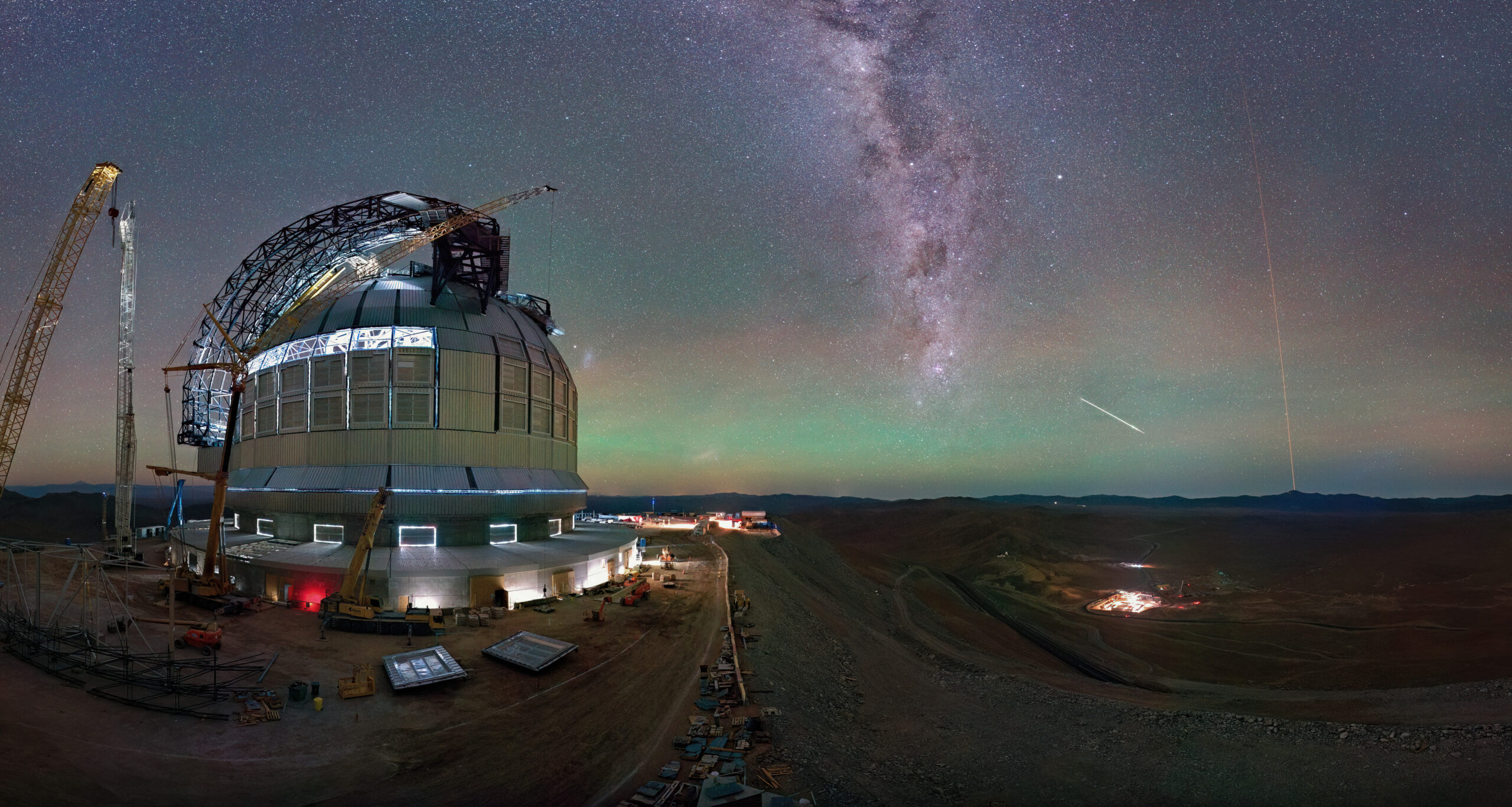ภาพถ่ายความคืบหน้าของสถานที่ก่อสร้างกล้องโทรทรรศน์ขนาดใหญ่ที่สุดในโลกของ ESO หรือหอดูดาวท้องฟ้าซีกใต้แห่งยุโรป (European Southern Observatory) ที่มีชื่อว่า กล้องโทรทรรศน์เอ็กซ์ตรีมลาร์จเทเลสโคป (Extremely Large Telescope: ELT) ซึ่งตั้งอยู่ในทะเลทรายอาตากามา (Atacama Desert) ประเทศชิลี
ภาพนี้ถ่ายเมื่อวันที่ 3 พฤษภาคม พ.ศ. 2568 แสดงให้เห็นถึงความก้าวหน้าของการก่อสร้าง โดมมีประตูยักษ์สองบานที่จะเปิดออกในเวลากลางคืน และโครงสร้างของประตูทั้งสองบานก็ติดตั้งเรียบร้อยแล้ว
ทางด้านขวาสุดของภาพ เราจะเห็นแสงเลเซอร์สีส้มสว่างพุ่งขึ้นไปบนท้องฟ้า เลเซอร์เหล่านี้ไม่ได้มีไว้เพื่อยิงใส่ดาวตก หรือผู้รุกรานจากอวกาศ แต่จริงๆ แล้วมันเป็นส่วนหนึ่งของระบบปรับแก้ความพร่าเลือนของชั้นบรรยากาศ (adaptive optics system) ของกล้องโทรทรรศน์เวรีลาร์จเทเลสโคป (Very Large Telescope: VLT) ซึ่งทำหน้าที่สร้างดาวนำทางประดิษฐ์ (artificial guide stars) เพื่อแก้ไขการรบกวนของอากาศในชั้นบรรยากาศของโลก และช่วยให้นักดาราศาสตร์ได้ภาพที่คมชัดที่สุดเท่าที่จะเป็นไปได้
เลเซอร์ทำงานโดยการกระตุ้นอะตอมของโซเดียม (sodium) ในชั้นบรรยากาศส่วนบน ซึ่งอยู่ในชั้นที่สูงจากพื้นดินประมาณ 90 กิโลเมตร และอะตอมเหล่านี้ถูกสะสมไว้ที่นั่นโดยอุกกาบาต
เครดิตภาพและข้อมูล: ESO




